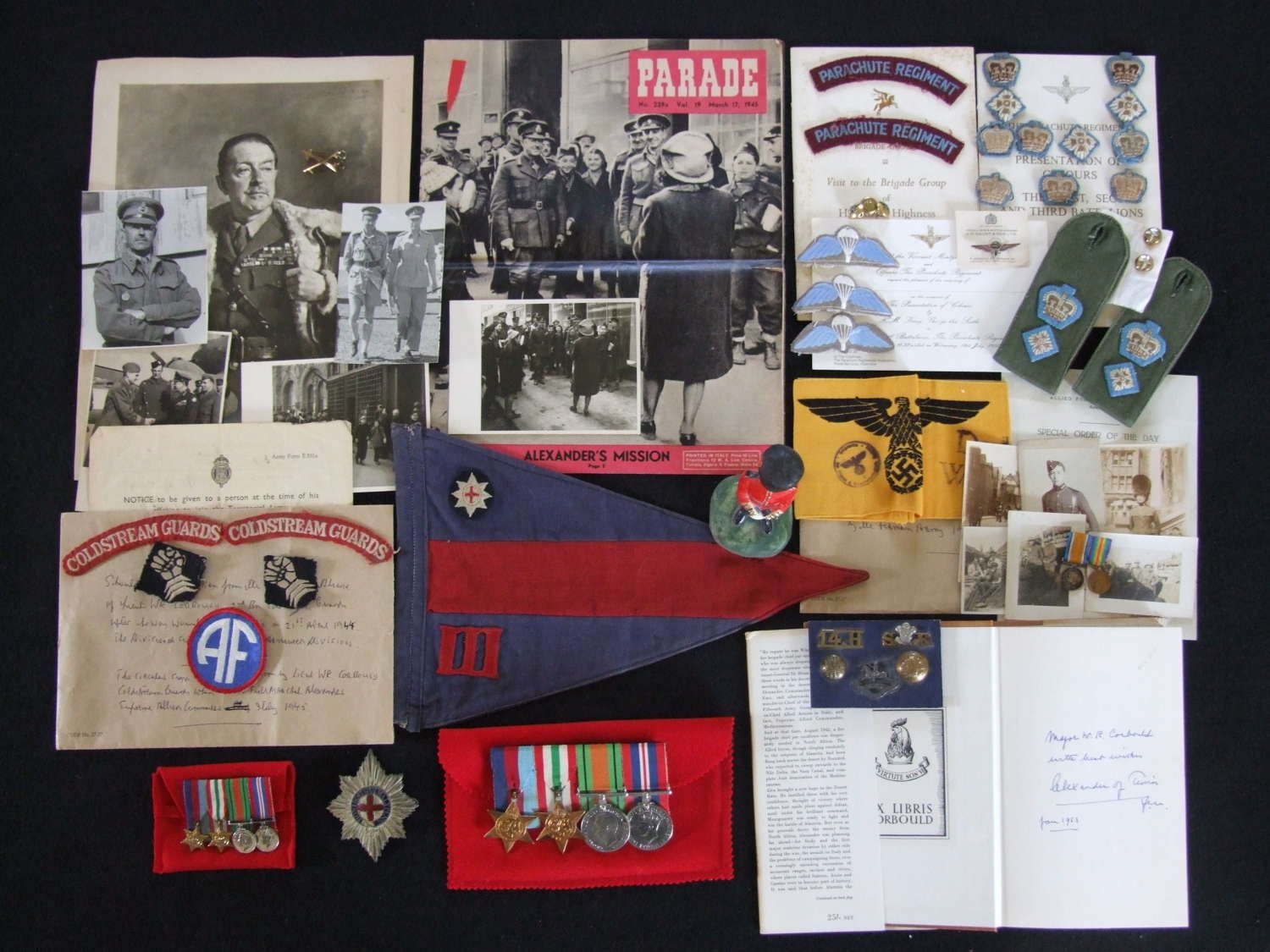
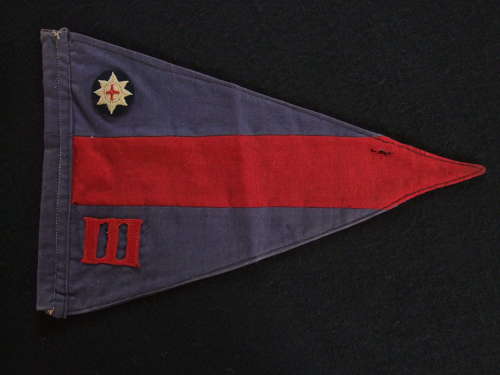
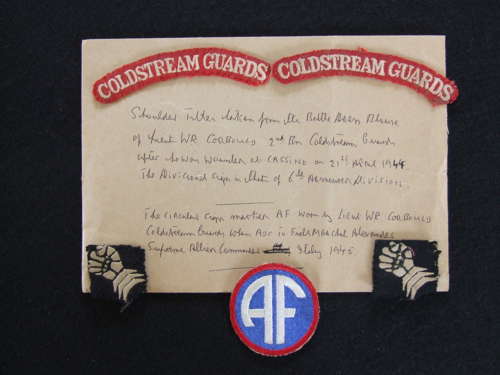
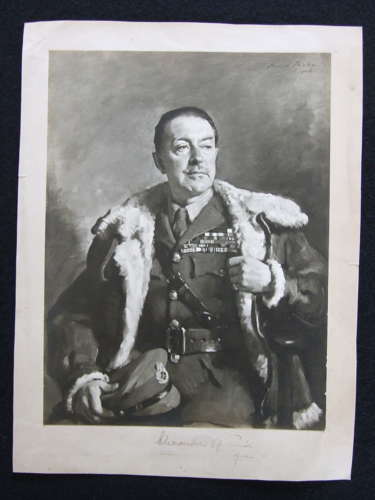
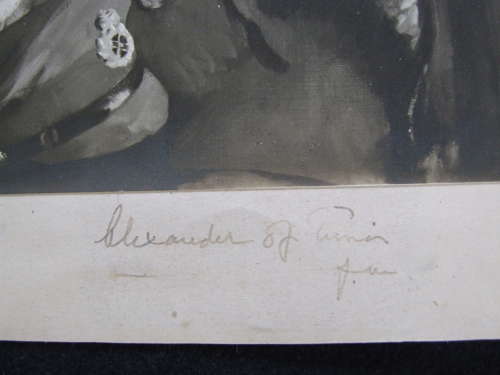
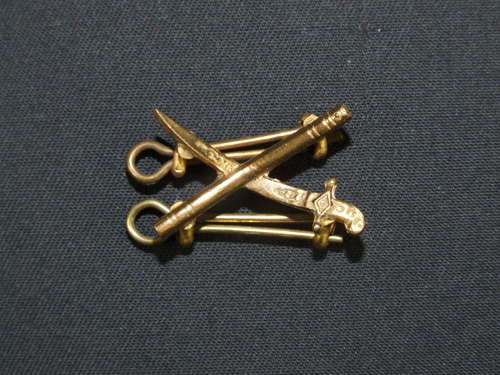
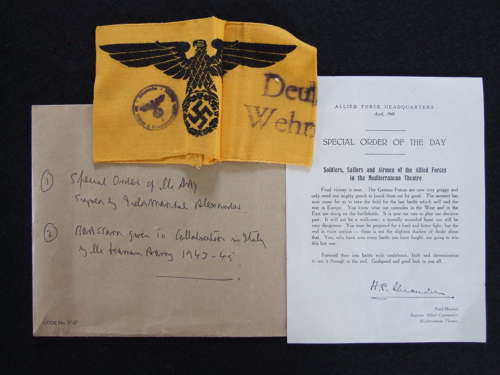
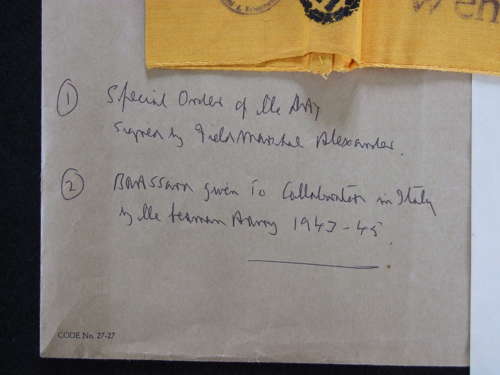
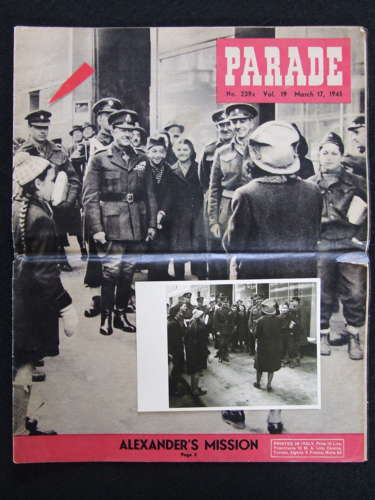
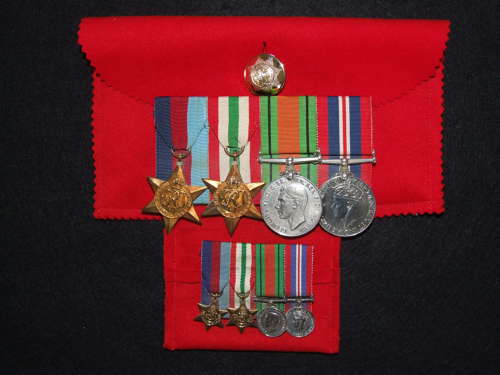
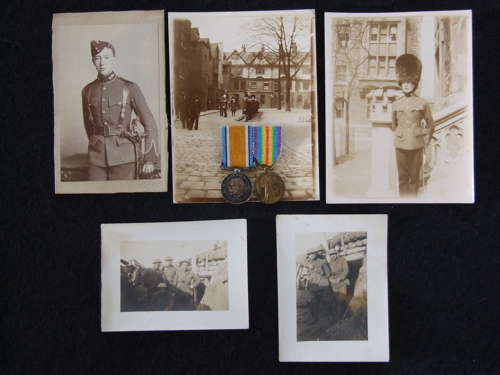
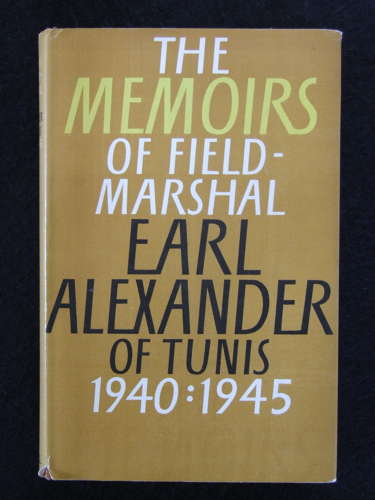
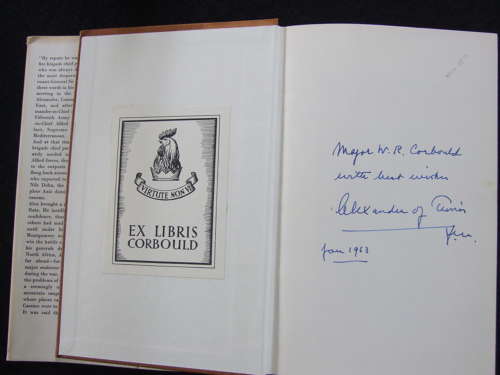
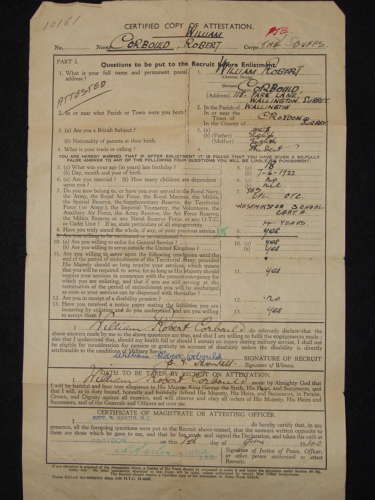
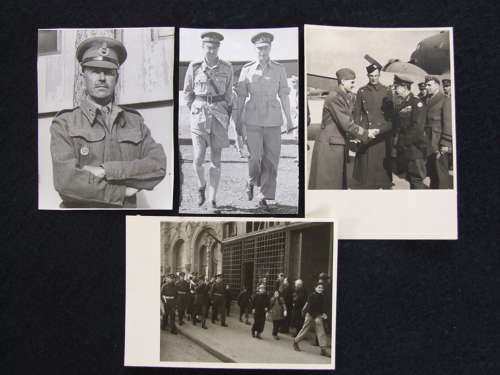
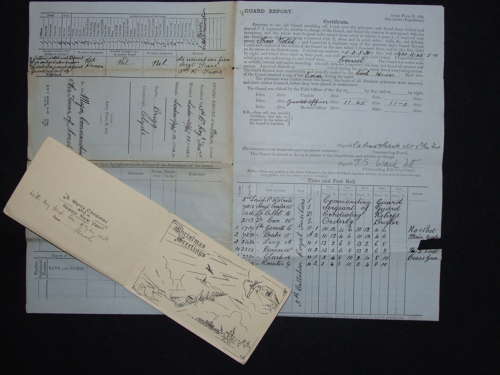
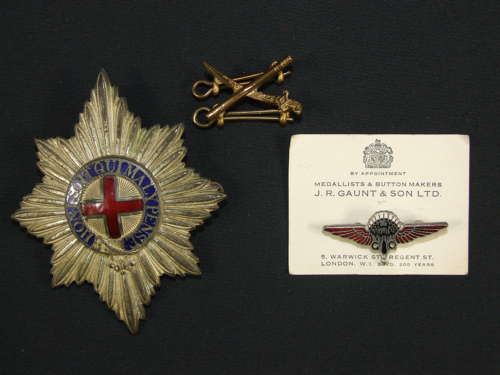
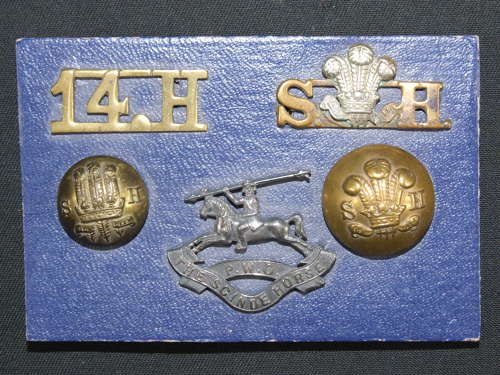
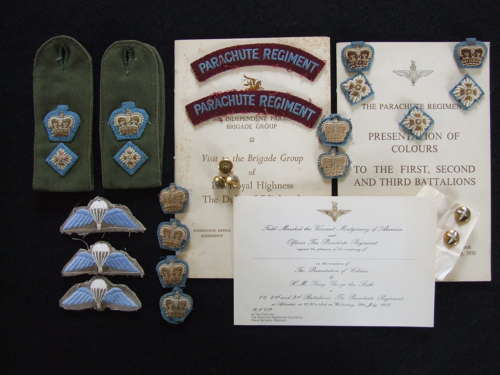
Code: 56208
An exceptional collection of artefact directly from the family of Lieutenant, later Lieutenant Colonel William Robert Corbould of the Coldstream Guard who served throughout World War Two and who was for a time, Aide to General, later Field Marschall Alexander of Tunis.
The collection comprises:
A picture card of the portrait of Alexander singed by him in ink.
A 3rd battalion Coldstream Guard Vehicle Pennant. Good condition with some light moth damage. A rare item
A copy of Picture Magazine dated 17th March 1945 the cover showing Alexander with Lt. Corbould behind shown by the arrow, along with a picture postcard of the same scene.
A pair of Coldstream Guards Shoulder Titles with 6th Armoured Division Formation signs and an American AF shoulder patch contained in a brown envelope on which Lt. Corbould has written “Shoulder Titles taken from the battledress blouse of Lt. WR Corbould 2nd battalion Coldstream Guards after he was wounded at CASSINO on 21st April 1944. The divisional sign is that of the 6th Armoured Division. The circular sign marker AF worn by Lieut AR Corbould Coldstream guards when ADC to Field Marschall Alexander Supreme Allied Commander Italy 1945.”
A brown envelope marked and containing “1. Special order of the day signed by Field Marschal Alexander. 2. Brassard given to collaborators in Italy in the German Army 1943-45” These were in fact civilian workers.
His court mounted medals each privately inscribed with his name and a matching set of miniatures.
A single General shoulder strap rank insignia presumably given to him during his time ad Aide to General Alexander perhaps after his promotion to Field Marschal
A Coldstream Guards Cap Badge and a GQ Parachute qualification pin on original card
A card with titles buttons and a cap badge to the 14th Prince of Wales Own Scinde Horses. This was an Armoured Division which saw action in North Africa
A collection of 6 original photographs of his father who also served in the Coldstream Guards. Two are dated 1900 and show him at the Tower of London, one in dress uniform and three in the trenches in France in 1916. He was to die in 1922 as a result of the effects of being gassed in France.
A Certificate of Attestation.
2 Official War Office Photographs of Alexander, one signed by him in ink along with two phot postcard.
A Copy of The Memoirs of Field Marschal Earl Alexander of Tunis 1940 : 1940 with dedication in ink “ Major W.R. Corbould with best wishes Alexander of Tunis Jan. 1963.
A collection of items relating to his post war service in the Parachute Regiment.
Lieutenant Colonel William Robert Corbould served with the Coldstream Guards. He began his Guards career during the Second World War in the ranks before receiving an emergency field commission to 2nd Lieutenant with 2nd Battalion, Coldstream Guards, in September 1941. He served in North Africa and the Mediterranean with the British North African and Central Mediterranean Forces and was wounded twice on active duty.
He remained with 2nd Bn, Coldstream Guards until 1947, when he joined the Parachute Regiment. He was twice wounded during parachute accidents in 1956 and later, in 1959 retaining a Para association for 30 years, serving as part of the British Army of the Rhine (BAOR)
Summary of service
British private served with 70th Bn The Buffs in GB, 1940-1941; cadet at Royal Military College, Sandhurst, GB, 1941; officer served with Training, Holding and 6th Bn Coldstream Guards, 33rd Guards Bde in GB, 1941-1942; served with 2nd Bn Coldstream Guards, 1st Guards Bde in Algeria, Tunisia and Italy, 1942-1944; served as ADC to Field Marshal Alexander in Italy, 1944-1945; served with 2nd Bn Coldstream Guards in Italy, 1945; served as adjutant of Officer Training School, Bangalore, India, 1945-1947; served with 5th Bn Parachute Regt in GB and Germany, 1947-1948; served as adjutant of Airborne Forces Depot, Aldershot, GB, 1948-1958; served with 1st Bn Parachute Regt in GB, 1958-1959; served as staff officer attached to 38 Group, RAF in GB, 1959-
1961; served with 10th Bn Parachute Regt in GB, 1962-1963; served as regimental adjutant of Parachute Regt in GB, 1964-1965; served as staff officer with British Defence Liaison Staff in Australia, 1966-1969; served as staff officer with South East District Headquarters at Aldershot, GB, 1970-1972; served as Commandant of Sennybridge Ranges, GB, 1973-1977.
Ltn Col. Corbould gave a series of tape recorded interviews which are held at the Imperial War Museum and which can be downloaded on line. Tape 4 covers his wartime experiences at Cassino:
In 1944 I went down to a place called San Potito where we trained, then up to the Cassino battle and town. When we got into Cassino we were at the left hand side of the town, 4 company and 16 platoon , my platoon was the lead platoon. What we did at night was go out on patrol and stalk the Germans, if needs be kill them, they were doing the same and it was a real cat and mouse game. We were in close quarter fighting. We walked into cassino across the mad mile as the Germans had a Spandau machine gun covering the route. We had to cross all sorts of bailey bridges etc and it had to be done at night, the Germans let off all sorts of very lights and then opened fire with the machine gun. We arrived at night at took over from the 2nd NZ Battalion armoured division. We found our way by navigating via dead bodies, we were told turn right at the dead NZ solider than keep going till you
come to a dead Italian and then left at the next German etc, sound crude but that was how we found our way, we had no map going into position. We eventually were led to a sangar on the hill and out popped a New Zealander, he said this is where you’re taking over from us. We were told it was going to be very close quarter, we were very close to the enemy, 70yds away. We lived in a sangar with rats under the floorboards, feeding off of the dead. We were told we were to be there a week. We could hear the Germans, smell them cooking etc. One morning there was an enormous commotion and all hell let loose, lead came pouring in, a patrol attack with grenades came in and I was hit along with another chap.
My platoon was deployed in 3 sections, one forward, about 50 yds ahead of me, 2 sections left and right and HQ with me in the middle. It was complete and utter chaos and debris, the most hideous site. The carnage, stink and stench was unbelievable. My platoon HQ was in a sangar, a part demolished building amongst the rubble. The roof was timber and made by the NZs, it was propped up but that held the day we were mortared and kept us safe. We couldn’t fire from the sangar it was about 8 ft long with 4/5 of us in there and my wireless operator. We had a field telephone but that kept getting its line cut. I had no direct comms with my forward sections, but we crept forward at night. Three men were killed in the forward section one night. We patrolled every night, 2 men and I or platoon Sgt. I went out each night and patrolled to forward section, rubble hills, we would spend an hour crawling around, only a few yards, we caught a German one night attending to the call of nature but he didn’t need to do it again! He was shot. There was artillery fire all around and smoke.
We could though at times hear the Germans chatting about 75 yds away. We spoke in Whispers. From the forward position they could not see more than 50yds to a corner, a short line of sight. The positions were limited in being able to support each other they couldn’t see each other. We were constantly on the look out.
Operation Honker at 11 Pm at night in May we mounted an attack with bayonets to winkle them out. Otherwise during the day you kept your head down, slept and ate.
It was a relief to go out at night and stretch our legs, Food would come up with water and mail at night from HQ to our lines. We had 2 attacks on our position, and we were not permanently mortared. With all the rubble, there was lots of ricochets.
On the morning of the attack we were hit by grenades and mortars by 3 blokes, who then scampered off. I was hit by grenade fragments in the head and neck and leg. The chap next to me got it in the stomach. I scrambled out 200 yards back to the aid post at battalion bunker. I had no first aid to start, no shell dressing, I wanted to go back to the platoon. The other chap was stretchered back. We had no casualties in the town of cassino but up on the hill we had our first.
The doctor dressed my wounds, and they patched me up and I was sent back to the casualty clearing station, then by train. It was a hospital train with QA nurses. They then operated on me, and I went back on castle hill below monastery hill two weeks later. We were shelled frequently up there; a shell came in and hit a shelf of grenades and killed my Sgt Major. The monastery was a complete ruin.
The Germans had a Spandau with a great rate of fire which were always a nuisance. Our routine was keeping clean, we had lost of dust now from constant shelling. I was pleased to be back with my own platoon. We all knew how each other worked a great team spirit. 16 platoon and I went up to the castle via pathway, quite a climb. On one night one of our shells hit us and killed one of our chaps.
The castle was under fire most of the time and we were in a confined space, not much room for manoeuvre. We could look down on the town from our position and fire down on some German positions. We could call in mortar fire and we had machine guns; we were 300 yards at that point.
We didn’t do night patrols at this time. The Germans were also up slope in the monastery, we knew they were using the place for observation. Our next engagement was at Arce on 28 May 1944.
Most of the activity was night fighting. On the day it fell the fallshirmjager new that the game was up and we rounded them up. They didn’t really resist. The monastery was about 600 yards away from us and we saw the Polish coming down the hill, jubilant.
At Arce, 2 Germans came over the hill with hands up we went forward to capture them, one stepped to the rear and the chap behind had a pistol and shot my guardsman dead. It changed how we dealt with them that day. Most of the time they were professional. We didn’t shoot that chap but others were not so lucky. Arce was north of Cassino, we went in behind the 17/21 st Lancers, we de-bussed and came under heavy shell fire, the tank commander was killed almost immediately after I left that tank poor man. We were on Mt Piccolo, we were in the middle of the mountains and a razorback ridge ahead. Chasing after machine gun nests, a hairy old performance.
Also included is a large amount of paperwork, magazines programmes etc from both before and after WW2